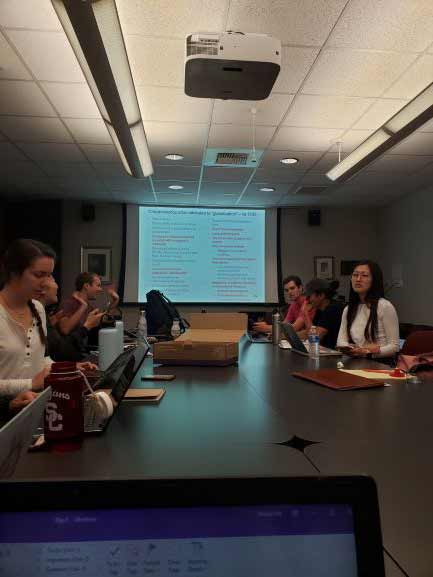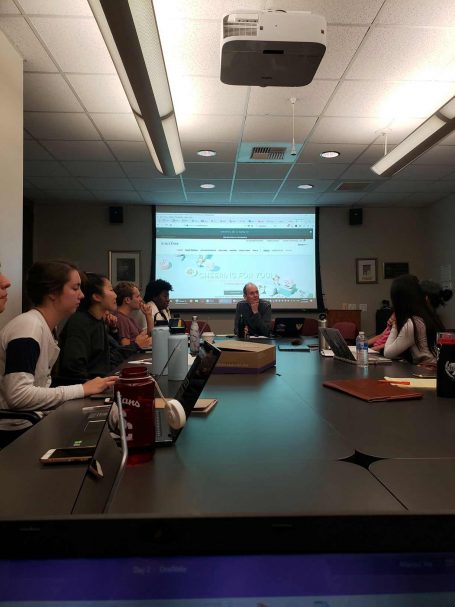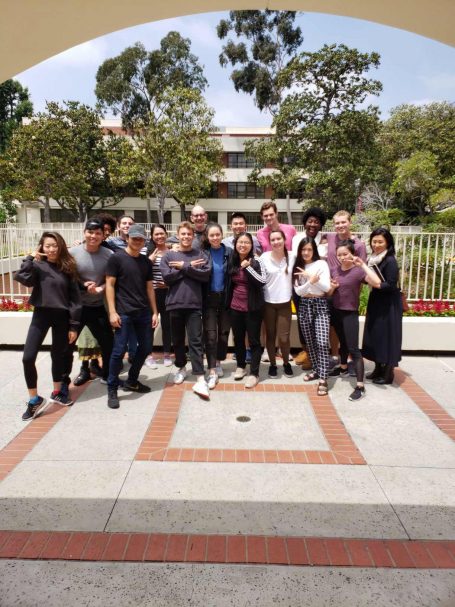Sarah Ajise & Marissa Yee
Hello blog! Today was our second day of class in Los Angeles. We began with a recap of the main ideas in the readings we discussed in class yesterday: What is globalization? What is the difference between subjective vs. objective globalization? And is a broad term like globalization worth defining?
We continued the morning by reviewing the basic geography of China, also known as “Professor Sheehan’s Quick and Dirty Guide to Geography.” The two major rivers, the Yangzi and the Yellow River, run east to west. China itself can be regionally divided in three ways. China proper contains the fertile land of the Southeast and excludes the plateaus and deserts. The North-South division lies between the Yangzi and Yellow Rivers with wheat and rice as respective characteristic crops. Land in the east is wetter and more densely populated while the land in the west is used for herding sheep and horses.
Next, Professor Sheehan gave a lecture on Global Connections before 1500. Examples included the spread of homo sapiens out of Africa over 40,000 years ago, the Silk Road between 200 BCE and 900 CE, trade diasporas, and Zheng He’s expeditions. It soon became clear to the class that globalization is not an entirely new phenomenon – aspects of global interaction have occurred since the very first humans.
Today was particularly exciting because we formed groups for our field research projects to be conducted in China. We each discussed our personal interests for the project, then picked groups based on broad connections between those interests. Currently, potential subjects include coffee shops and tea shops, Chinese beer, face masks, store design, and sustainable packaging. With such a variety of subjects at this preliminary phase, our projects surely seem promising!
At the end of class, we discussed two readings, Cochran – “Consumer Culture in Chinese History,” and Wang & Yeh – “Globalization and Hybridization in Cultural Products.” We discussed whether consumer culture was top down or bottom up, that is, whether consumer culture is primarily driven by imposing corporations or the selective support of consumer choice. We also discussed terms like deculturalization, acculturation, and reculturalization through the lens of two Chinese hybrid movies, Mulan and Crouching Tiger, Hidden Dragon. This led to more discussion on cultural appropriation, cultural signifiers, and the search for the authentic.
The East Asian Studies Center staff also came by at the end of class to take a picture of the group. Here we are in silly mode!
By the end of today, everyone had become aware that within a week we’d be in China! As we were looking over the final logistics of our travel—flight seats, currency exchanges, VPN installations, WeChat, and packing lists—everyone expressed their excitement. We’ve got a great group of 15 students, and we are all psyched to travel and explore.



